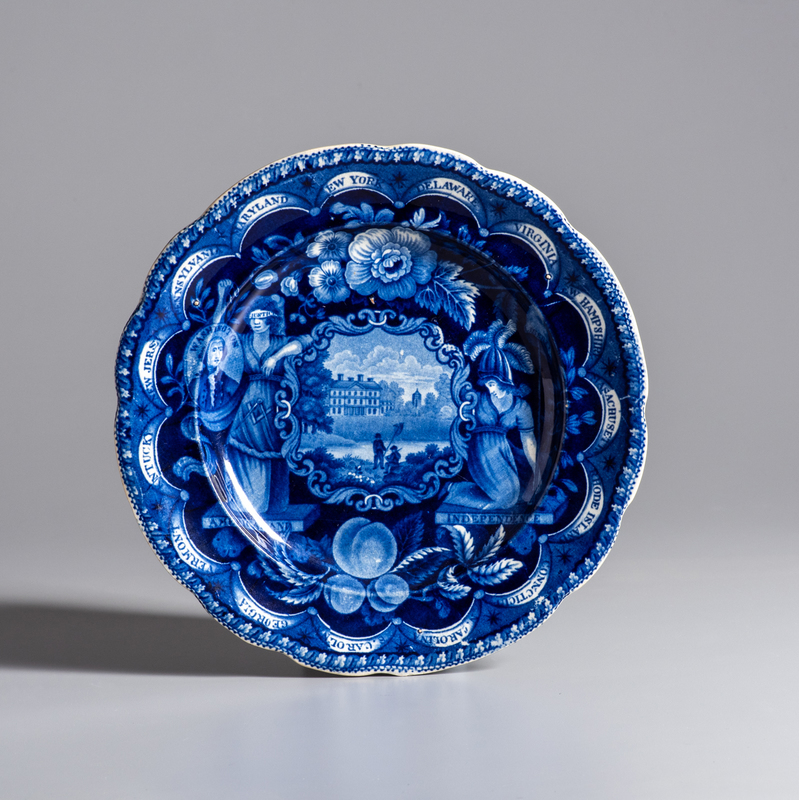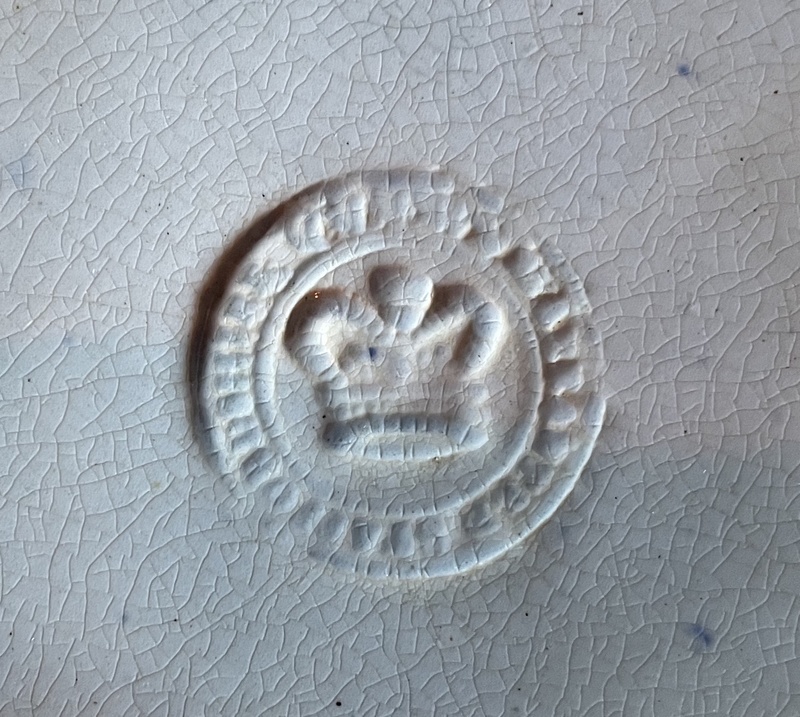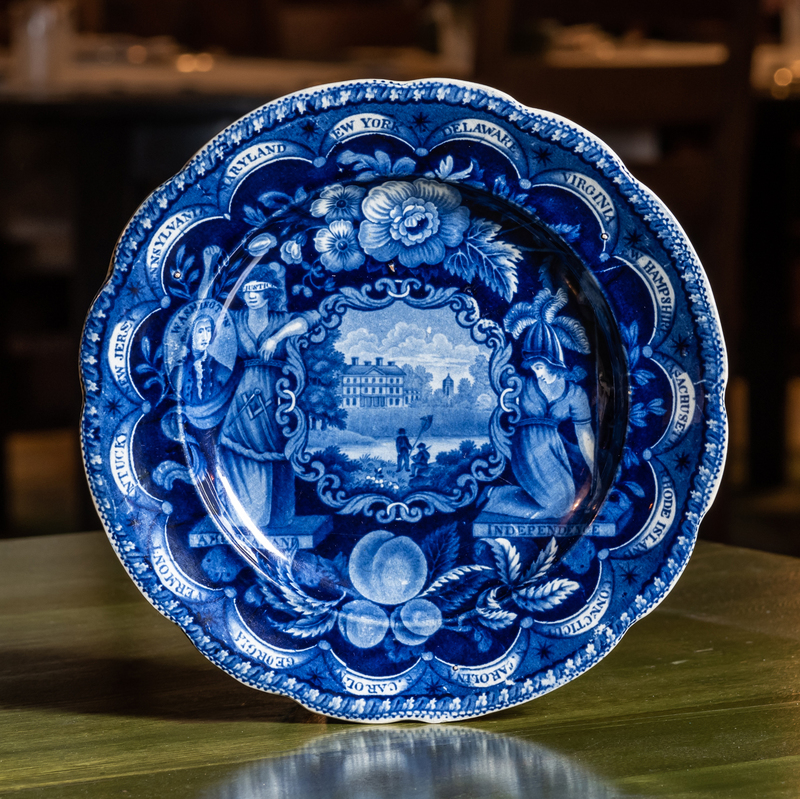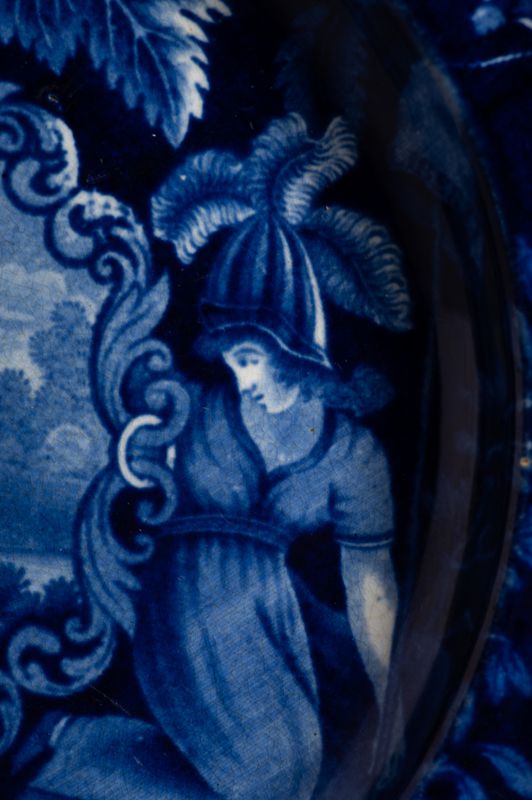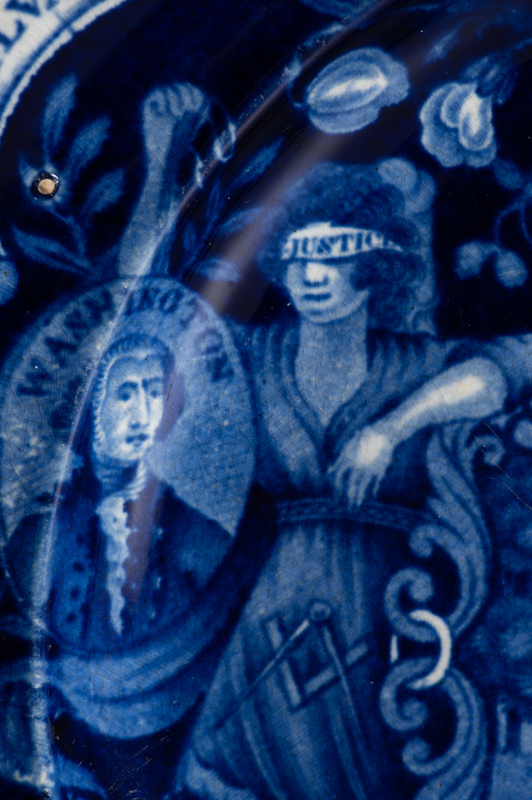Plate
Item
Title
Plate
Creator
James and Ralph Clews
Date
1818-34 (ca.)
Dimensions
10 1/2 inches (d)
Medium
Glazed stoneware
Object No.
2022.3
Credit line
Museum Purchase
Marks
Firm's stamp impressed on back "Clews Warranted Staffordshire" surrounding a crown.
Description
Stickley's affinity for 19th-century English transferware has only recently been recognized, and paints a more complicated picture of his tastes than previously acknowledged. Displayed at his home on Columbus Avenue in Syracuse, featured on the sideboard of the Dining Room in the Log House at Craftsman Farms, and used to adorn his furniture in promotional photographs from 1902, the logical conclusion is unmistakable: Gustav Stickley lived with and liked blue and white ceramics that had no relationship whatsoever to the Arts and Crafts movement. How else then, do we account for the Wedgwood pottery he owned and the numerous blue and white Delft plaques that adorned the Log House's Dining Room?
The pattern of this plate, popularly known as "America and Independence" because of its text, features a border of fifteen state names surrounding a view of Bishton Hall in Staffordshire, though viewers in this period were unlikely to know that. It was made by brothers James and Ralph Clews in England specifically for the American Market.
Politely, we might say that the plate's iconography is "curious." Justice, a female figure, blindfolded and holding an oval portrait of George Washington, wears a Masonic apron and gestures as though she has forgotten the artist failed to include the scales which she typically holds. On the "independence" plinth, a female figure in Roman helmet kneels while holding a "liberty cap" atop a pole that was likely derived from William Hogarth's print of John Wilkes (1763), with whom the Sons of Liberty in Boston identified as the American Revolution loomed. These flank a central cartouche with a British view, and are flanked not by the thirteen original states, but by the first fifteen (not even all of the eighteen states admitted to the Union by the time Clews founded his factory were included). The order of the state names is neither chronological or alphabetical, but seems almost to have been chosen at random.
The pattern of this plate, popularly known as "America and Independence" because of its text, features a border of fifteen state names surrounding a view of Bishton Hall in Staffordshire, though viewers in this period were unlikely to know that. It was made by brothers James and Ralph Clews in England specifically for the American Market.
Politely, we might say that the plate's iconography is "curious." Justice, a female figure, blindfolded and holding an oval portrait of George Washington, wears a Masonic apron and gestures as though she has forgotten the artist failed to include the scales which she typically holds. On the "independence" plinth, a female figure in Roman helmet kneels while holding a "liberty cap" atop a pole that was likely derived from William Hogarth's print of John Wilkes (1763), with whom the Sons of Liberty in Boston identified as the American Revolution loomed. These flank a central cartouche with a British view, and are flanked not by the thirteen original states, but by the first fifteen (not even all of the eighteen states admitted to the Union by the time Clews founded his factory were included). The order of the state names is neither chronological or alphabetical, but seems almost to have been chosen at random.

